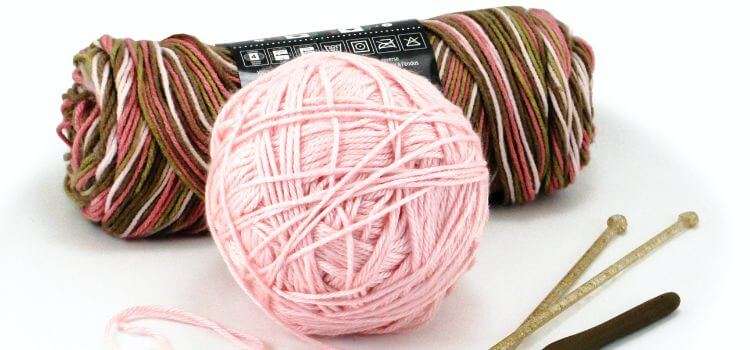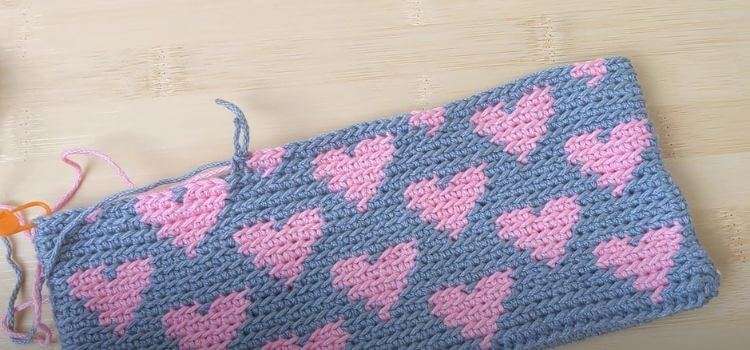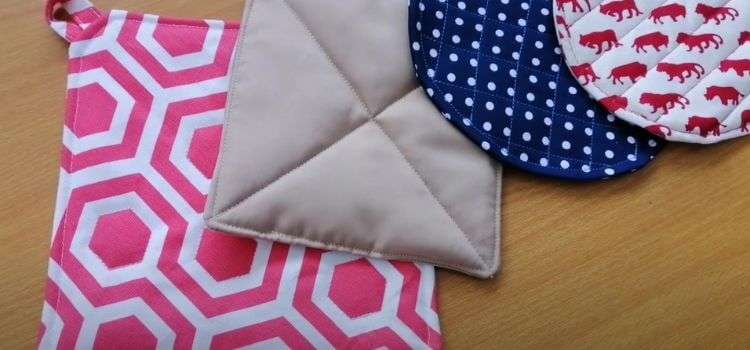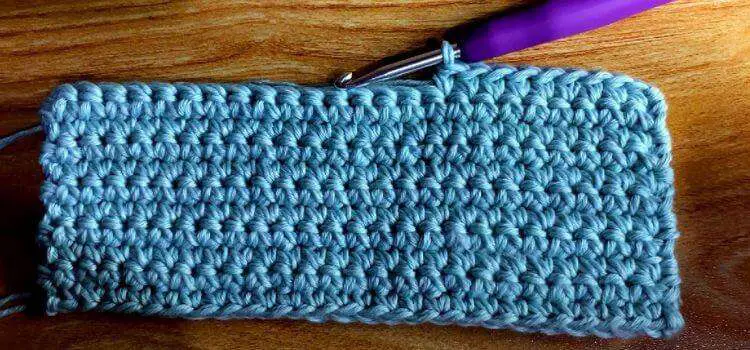Potholders are a common household item that many people use every day. They’re used to hold pots and pans, and they’re a quick and easy way to keep your kitchen clean and tidy. The problem is that potholders are made of fabric, so they can’t be reused after washing them.
If you want to save money, you can make your own potholders out of some of the materials you already have at home—like some of the yarns you already have around the house. You can even use yarn from old sweaters or scarves.

In this post, we’ll show you how to make a simple set of potholders from yarn, and we’ll also show you how to make a potholder that can be reused for years. We will also discuss whether can you use acrylic yarn for potholders.
What Is Acrylic Yarn?
Most people think that acrylic yarn is a brand name for a type of yarn made from polyester. That’s wrong. Acrylic yarn is made from acrylic fibers. You might not recognize this fiber, but it’s a popular choice among knitters. It’s soft and flexible, and it doesn’t break easily. It can also be colored with dyes.
Acrylic yarn is used in various products, such as carpets, clothing, and even the insulation inside some types of thermal underwear. Many people prefer using acrylic yarn because it’s a bit stronger than cotton and other natural fibers. You can also find acrylic yarn in various colors.
Advantages of Using Acrylic Yarn for Potholders
The most obvious benefit of using acrylic yarn for potholders is that it’s inexpensive. It’s very economical compared to the cotton yarn, which is used in most other potholders. You can make acrylic potholders in different colors, which means that they’re fun to wear.
You can use them for different things, such as towels, aprons, and bathrobes. Also you can even make them out of scraps of fabric. The beauty of acrylic yarn is that it’s easy to care for. Since it’s easier to clean, you don’t have to worry about it getting dirty. It’s also nice that it dries quickly. Acrylic potholders are versatile and can be used in multiple ways.

Disadvantages of Using Acrylic Yarn for Potholders
When it comes to using acrylic yarn for potholders, some significant disadvantages need to be considered. While acrylic yarn certainly has its strengths, It’s critical to understand its restrictions to ensure the safety and functionality of your potholders.
Heat Resistance: Because acrylic yarn is made of acrylic, it does not melt.
Melting Hazard: Unlike plastic potholders that melt and melt again, acrylic potholders can last for a long time. You can use them around the house and wash them often. They will not melt or burn, so you don’t have to worry about the heat.
Unsuitable for High-Temperature Tasks: Since acrylic yarn is a synthetic fiber, it cannot be used in high-temperature tasks. For example, you shouldn’t use it as an oven mitt, although you can use it as a dishcloth. If you use it in high-temperature tasks, you may risk damaging the yarn.
Tips for Using Acrylic Yarn for Potholders
Several valuable tips can enhance your results when incorporating acrylic yarn for crafting potholders. Selecting high-quality acrylic yarn with good heat resistance is essential to ensure safety. Experimenting with double stranding or opting for tight stitch patterns can boost thickness and insulation.
Introducing a lining of heat-resistant fabric can further enhance protection against heat. It’s essential to inform users about the material’s limitations and advise against exposing the potholders to excessive heat. Following these suggestions, you can create functional and visually appealing potholders that align with the strengths of acrylic yarn.
Alternatives to Acrylic Yarn For Making Potholders
When it comes to making potholders, choosing yarn that is heat-resistant and safe to use in the kitchen is essential. Here are some alternatives to acrylic yarn that are suitable for potholders:
Cotton Yarn: Cotton is a common material for potholders due to its natural heat resistance and durability. It resists melting even at high temperatures deforming.
Linen Yarn: Linen is another excellent option for potholders. It has good heat resistance and becomes softer with each wash, making it a practical and stylish choice.
Hemp Yarn: Hemp is a strong and heat-resistant fiber, making it a suitable choice for potholders. It’s also eco-friendly and durable.

Bamboo Yarn: Bamboo yarn has natural antibacterial properties and is relatively heat-resistant. It’s a softer option than some other plant-based fibers.
Wool Blends: While pure wool isn’t ideal for potholders due to its heat sensitivity, wool blends that include other fibers like cotton or silk can offer both heat resistance and added texture.
Heat-Resistant Blends: Some yarn manufacturers create blends specifically designed for kitchen items like potholders. These blends often combine natural fibers with heat-resistant synthetic materials for optimal safety.
Organic Yarns: Organic cotton, hemp, or bamboo yarns are produced without the use, making them a secure and environmentally sustainable alternative for potholders.
Specialty Yarns: Look for yarns labeled as “kitchen cotton” or “heat-resistant yarn” that are explicitly designed for potholders and other kitchen items.
Safety Precautions and Care
Always check the yarn’s heat resistance and care instructions when choosing an alternative to acrylic yarn for potholders. Remember that safety is a priority when working with items that will come into contact with heat, so opt for yarns that are known to perform well in high-temperature situations.
Is Acrylic Yarn Safe to Touch Hot Pans?
No, you should avoid putting hot pans on acrylic yarn. The acrylic yarn has lower heat resistance and can soften or become damaged when exposed to high heat. For products in close contact with hot objects, it’s crucial to utilize materials with superior heat resistance, such as cotton or specialty heat-resistant textiles.
Is Bamboo Yarn Heat Resistant?
Bamboo yarn, while generally known for its many positive qualities, including its softness, sustainability, and moisture-wicking properties, is not considered highly heat-resistant. Bamboo fibers have a lower melting point than other natural fibers like cotton or wool.
If you’re considering using bamboo yarn for projects involving high heat exposure, such as pot holders or oven mitts, it’s important to exercise caution. Direct contact with hot surfaces or objects could cause the bamboo fibers to melt or weaken, compromising the item’s integrity and potentially posing a safety risk.
For projects that require heat resistance, it’s advisable to use yarns that are designed explicitly for that purpose, such as cotton or specialized heat-resistant yarns. Suppose you’re set on using bamboo yarn for such projects. Consider combining it with other heat-resistant fibers or using it for items that won’t be exposed to direct heat, like decorative items or lightweight accessories.
How to Make Acrylic Yarn Potholders?
You need to take a few minutes to learn how to make your own potholder. You should learn how to make a potholder out of a wool sweater. Then, you can save some money by making your potholder. You can reuse a potholder for years if you take care of it.

Step 1
Start by taking a piece of yarn and a needle. Take a needle and thread it through a hole in the center of a piece of wool.
Step 2
Now, cut the wool into a piece that will fit around your pot or pan.
Step 3
Cut the yarn into a length that will just barely wrap around the pot or pan. Try not to make the potholder too tight.
Step 4
Put the pot or pan on the table. Hold the potholder around it.
Step 5
Now, tie the ends of the yarn together. The point of tying them is to make sure that the potholder doesn’t come untied.
Step 6
You can add some decorative details to the potholder if you want to. You can use ribbon to make a bow or a scrap of cloth to make a patch.
Step 7
To keep the potholder from unraveling, you can sew it up. Try to get a good, even stitch.
Step 8
To keep your potholder in good shape, hang it up to dry.
Step 9
When the potholder has dried, you can start using it.
Conclusion
In conclusion, the question “Can you use acrylic yarn for potholders?” unveils a multifaceted exploration into crafting. While acrylic yarn might not align perfectly with the traditional characteristics of heat resistance that potholders require, it presents an array of unique advantages that can be harnessed with ingenuity and thoughtful consideration.
Acrylic yarn’s vibrant colors, affordability, and ease of care allow crafters to infuse their potholders with personality and creativity. Its durability, combined with techniques that enhance its strength, can yield potholders that endure daily kitchen use. The customizable thickness of acrylic yarn allows for creation potholders that strike the right balance between insulation and flexibility, accommodating diverse preferences.
As with any crafting decision, safety remains paramount. By implementing precautions such as using multiple strands, lining with heat-resistant fabric, or incorporating blends with heat-resistant fibers, crafters can enhance acrylic yarn’s suitability for potholders while ensuring protection against burns.
Ultimately, the choice of yarn for potholders depends on individual priorities. While acrylic yarn might require some adaptations to meet the demands of heat resistance, its benefits and creative possibilities make it a valuable contender in the world of potholder crafting. So, can you use acrylic yarn for potholders? The answer lies in your unique approach, creativity, and willingness to explore new avenues in your crafting journey.
Frequently Asked Questions FAQ: Can You Use Acrylic Yarn For Potholders?
Can I use acrylic yarn for making potholders?
Yes, you can use acrylic yarn for making potholders, but it might not be the best choice.
Can I mix acrylic yarn with other materials to make potholders?
It’s best to avoid mixing acrylic yarn with other materials for potholders because it can still pose a melting risk.
How can I care for potholders made with acrylic yarn?
Wash them gently by hand or on a delicate cycle in cool water to avoid damaging the yarn, and let them air dry flat to maintain their shape.
What are some alternatives to acrylic yarn for potholders?
Cotton yarn is a better choice for potholders because it is heat resistant and won’t melt.
As an Amazon Associate, I earn from qualifying purchases
